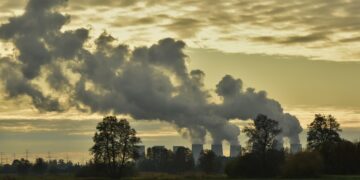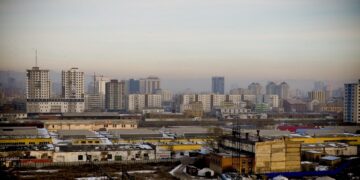Choking Clouds: The Impact of Industrial Emissions on Air Quality
In contemporary society, air quality has emerged as a pivotal concern, particularly in the face of escalating industrial emissions. These emissions, comprising various pollutants, profoundly impair atmospheric conditions, affecting both environmental sustainability and public health. This article delves into the dire impacts of industrial emissions, explores regulatory measures, and discusses technologies aimed at curbing these environmental adversaries.
The Composition and Sources of Industrial Emissions
Industrial emissions are predominantly generated by manufacturing plants, power stations, refineries, and other industrial operations. These emissions include a range of harmful pollutants like sulfur dioxide (SO2), nitrogen oxides (NOx), carbon monoxide (CO), particulate matter (PM), and volatile organic compounds (VOCs). The burning of fossil fuels such as coal, oil, and natural gas in these industries is a major contributor to air pollution.
How Industrial Emissions Degrade Air Quality
The impact of industrial emissions on air quality is multifaceted. Particulate matter, for instance, not only reduces visibility but can also penetrate deep into the lungs and enter the bloodstream, causing cardiovascular and respiratory diseases. Nitrogen oxides and sulfur dioxide contribute to the formation of ground-level ozone and acid rain, which can lead to severe respiratory problems and deplete soil nutrients, impacting agriculture and wildlife.
Global Health Effects and Economic Impact
The health implications associated with poor air quality from industrial emissions are alarming. Millions of premature deaths worldwide are attributed to air pollution, with conditions such as asthma, bronchitis, heart disease, and lung cancer being linked to exposure to pollutants. Economically, health care costs surge as more individuals require treatment for these conditions. Moreover, labor productivity decreases due to increased sickness rates.
Regulatory Frameworks and International Cooperation
To combat the proliferation of industrial emissions, numerous countries have established stringent regulatory frameworks. Organizations such as the U.S. Environmental Protection Agency (EPA) and the European Environment Agency (EEA) enforce regulations that mandate industries to limit their emissions. International agreements, such as the Paris Agreement, aim to unite countries in the fight against global warming, encouraging them to set ambitious national targets for reducing their carbon footprints.
Advancements in Emission Reduction Technologies
Innovations in technology have paved the way for reducing industrial emissions. Techniques such as carbon capture and storage (CCS), selective catalytic reduction (SCR), and the use of scrubbers can dramatically lower the emissions of harmful pollutants. Furthermore, the shift towards renewable energy sources such as wind, solar, and hydroelectric power also plays a crucial role in diminishing reliance on fossil fuels.
Best Practices for Industries to Improve Air Quality
Industries can adopt several best practices to mitigate their impact on air quality. Routine maintenance of equipment ensures efficient operation and minimal emissions. Upgrading to cleaner technologies and fuels, implementing rigorous training programs for staff on environmental impact, and performing regular environmental audits help significantly in maintaining compliance with regulations and minimizing pollution.
The Role of Individuals and Communities
While industries are major contributors to air pollution, individuals and communities also have a role in improving air quality. Actions such as advocating for stricter regulations, participating in local environmental initiatives, and reducing personal carbon footprints can collectively make a significant difference. Community monitoring programs can also hold local industries accountable for their emissions.
Conclusion
Tackling the challenge of industrial emissions is not only crucial for maintaining air quality but is imperative for the well-being of our planet and future generations. Through a combination of regulatory enforcement, technological innovation, and community involvement, significant progress can be made in the fight against air pollution. It is our collective responsibility to ensure the air we breathe remains clean and sustainable.
Frequently Asked Questions
What are the primary pollutants in industrial emissions?
The primary pollutants include sulfur dioxide (SO2), nitrogen oxides (NOx), carbon monoxide (CO), particulate matter (PM), and volatile organic compounds (VOCs).
How do ground-level ozone and acid rain form?
Ground-level ozone forms when NOx and VOCs react in the presence of sunlight. Acid rain results from the combination of sulfur dioxide or nitrogen oxides with water vapor in the atmosphere, falling as precipitation with pH levels below normal.
What can individuals do to help improve air quality?
Individuals can help by advocating for stricter environmental regulations, participating in or initiating local environmental programs, and reducing their own carbon footprints through lifestyle choices such as using public transport, recycling, and conserving energy.










